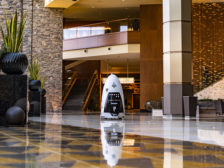Trends & Industry Issues
GOVERNMENT SECURITY
Navigating Recent Changes to GSA Schedules
Thanks to a variety of circumstances, opportunities abound in the government sector. To take advantage, though, you’ll first have to familiarize yourself with GSA Schedules.
October 18, 2021
Video Surveillance
Getting on Top of the Curve With Drones & Robots
The learning curve with surveillance drones, security robots and counter-drone solutions is less about absorbing new technology and more about executing it for the best results in the appropriate use-cases.
September 20, 2021
CYBERSECURITY
The Security Industry's Cyber Problem
There was once a time when physical security professionals didn’t have to consider cyber vulnerabilities. Now, cybersecurity should be top-of-mind for everyone in the supply chain.
September 7, 2021
5-Minute Tech Quiz
Test Your Knowledge on Grounding & Bonding
INSTALLATIONS
September 2, 2021
Distributor Training & Resources
Distributor Training Options Are Broader Than Ever
COVID-19 spurred a boom in digital training. Now in-person training is back. But digital isn’t going away any time soon, distributors say.
August 30, 2021
Be in the forefront of security intelligence when you receive SDM.
Join over 10,000+ professionals when you subscribe today.
SIGN UP TODAY!Copyright ©2024. All Rights Reserved BNP Media.
Design, CMS, Hosting & Web Development :: ePublishing















